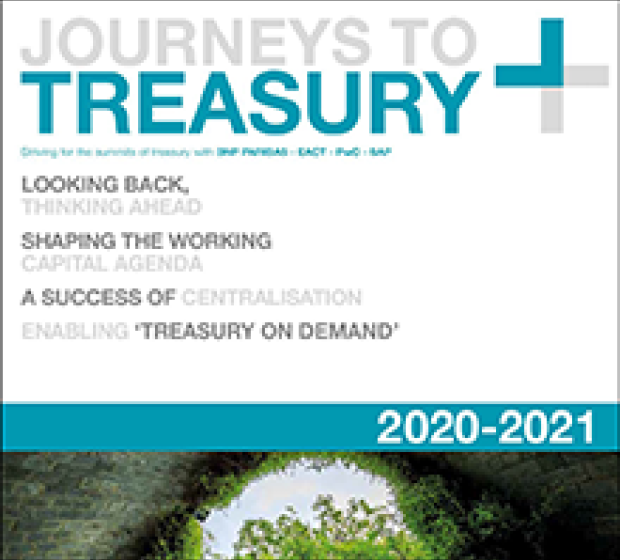Journeys to treasury 2020 – 2021: Innovation, Agility and Resilience
As the Journeys to Treasury partnership, comprising BNP Paribas, PwC, SAP and the EACT, marks its fifth year, the value of diverse, practical insights to support treasurers during good times and bad has never been more important. With the launch of the 2020-2021 report, following on from the special COVID-19 series earlier in the year, the Journeys to Treasury partners are helping treasurers globally at every step through a tumultuous journey.
Once again, this year’s report explores the key themes, priorities and challenges with which treasurers are faced, whether during ‘business as usual’ or more challenging times, as revealed in the results of an EACT Survey of 200 treasury professionals, conducted at the start of the crisis.
Looking back, thinking ahead
The COVID-19 crisis has emphasised the critical role of treasury, and treasurers around the world have stepped up to provide liquidity to their organisations, manage risk and help stabilise supply chains. Their ability to do this has been based on the investment they had already put into skills, organisational resilience, treasury strategies and digital technologies for transparency, analytics and automation, often over many years, as this year’s report explores.
Shaping the working capital agenda
37% reported that while working capital management is a significant priority for treasury, over half (56%) had either no role or responsibility for working capital decision-making.
Traditionally, many treasurers have been involved in working capital only to the extent of managing the outcomes of decisions made by other business functions. As working capital has become more constrained, and treasurers’ role elevated, some treasurers are now engaging more closely with the functions that ‘own’ different elements of working capital and exploring opportunities for working capital enhancement.
Making a success of treasury centralisation
28% of treasurers said that treasury centralisation is still a priority, even after many years
While treasury centralisation has been a trend for a decade or more, rarely can treasurers say they have ‘completed’ centralisation, particularly in organisations engaged in M&A. Today, centralisation is an organisational ambition for a wide spectrum of companies to enhance cash visibility, manage cash liquidity and risk on a groupwide basis, create economies of scale and improve operational efficiency and control.
Enabling treasury on demand
62% use, or plan to use, data analytics, compared with 43% in 2019, and 52% of treasurers are interested in real-time information.
Digitisation has risen in treasurers’ list of priorities over recent years, but expectations have been raised as new opportunities for real-time and faster payments and data flows have emerged more strongly. The COVID-19 crisis has accelerated and strengthened the business case both for automated processes, and for faster access to data for operational and strategic decision making.
This year’s report shares the findings of in-depth workshops attended by experts from the four Journeys to Treasury partners, complemented by practical insights and case studies from leading corporate treasurers and key results from the EACT’s latest treasury survey.
To download a copy of the report, please click https://www.journeystotreasury.com/

